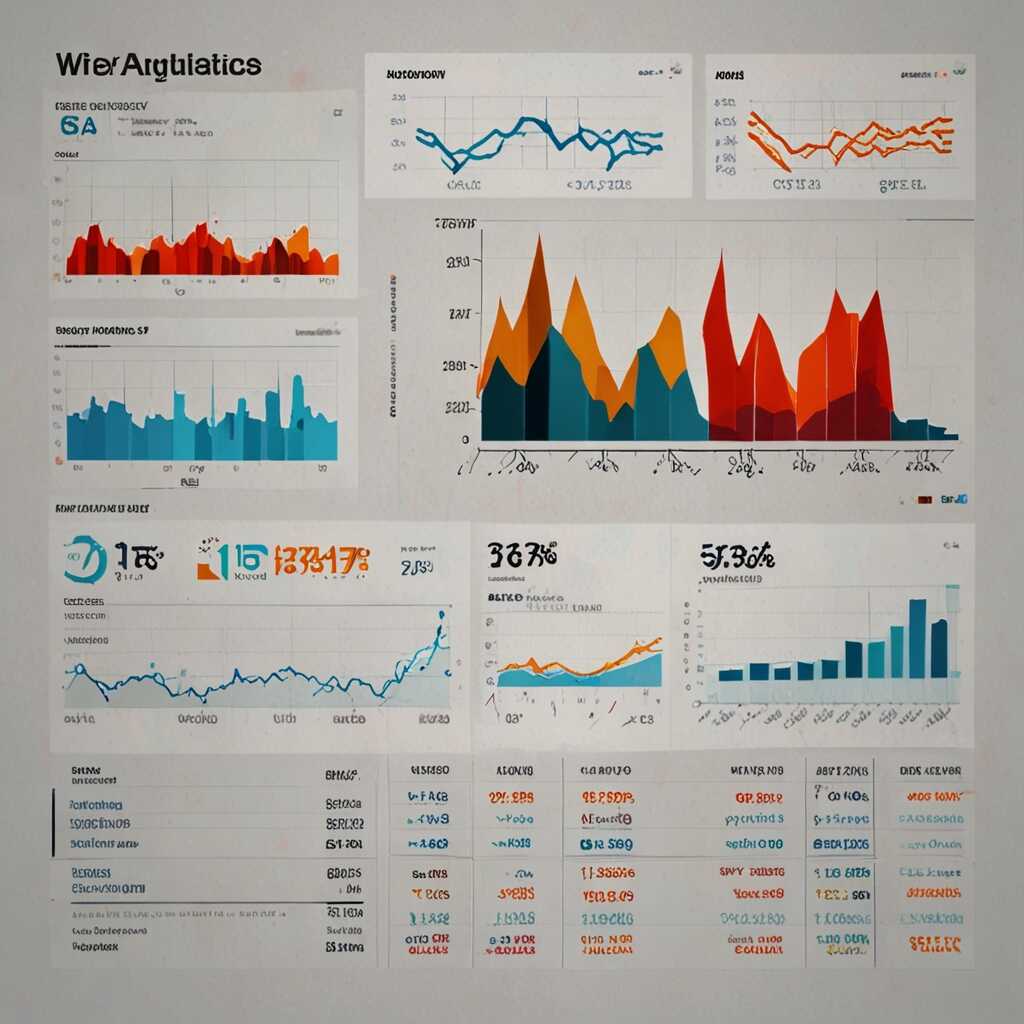Optimizing featured snippets is essential for achieving position zero success in search results. Featured snippets can dramatically increase your visibility and drive traffic to your website. At Metrics Rule, we focus on technical SEO strategies that help you craft content tailored for these snippets. By understanding the intricacies of search engine results pages (SERPs), we can guide you toward effective optimization techniques that capture user intent.
Defining Featured Snippets
Featured snippets are selected search results that are displayed at the top of Google’s search results page. These snippets provide users with direct answers to their queries without needing to click through to a specific website. They typically pull content from web pages that have structured information and relevant data. By optimizing your content for these snippets, you can significantly enhance your search engine visibility and drive organic traffic to your site. Certain types of content, such as lists, tables, and short paragraphs, are more likely to be chosen for featured snippets. This selection helps deliver reliable, concise information to users, thereby improving their search experience.
Types of Featured Snippets and How to Optimize for Them
There are three main types of featured snippets: paragraph snippets, list snippets, and table snippets. Paragraph snippets provide a brief answer to a user’s question and include a summary of your content. List snippets display information in a bulleted or numbered format, often for “top 10” lists or step-by-step instructions. Table snippets present data in a structured table format, ideal for comparisons. To optimize your content for featured snippets, ensure your headings clearly outline key points, use bullet points for lists, and include structured data where applicable. This approach can greatly improve your chances of earning a featured snippet, resulting in more organic traffic growth.
Why Achieving Position Zero Matters for Your Brand
Ranking in position zero is crucial for enhancing your brand’s visibility. When your content achieves featured snippets, it places your website at the forefront of search engine results. This prominence increases user trust and perception of your brand’s reliability. Featured snippets provide essential opportunities to engage users directly, enhancing the likelihood of them clicking through to your site. Moreover, studies have shown that click-through rates can increase by up to 30% when a page ranks in this coveted position. This statistic highlights the effectiveness of SEO strategies focused on securing featured snippets.
Key Benefits of Featured Snippets for Businesses
Featured snippets offer multiple advantages for online businesses and entrepreneurs. They not only improve visibility but also enhance the user’s search experience by delivering concise and relevant information quickly. In 2025, leveraging featured snippets can position your brand as a trusted resource within your niche. High-quality, well-optimized content that answers users’ queries efficiently can capture more clicks than traditional listings. This ensures your site gets more traffic and can lead to better conversion rates. Utilizing SEO strategies that focus on these snippets allows you to consistently test and refine your approach, staying ahead of competitors and ensuring that your brand stands out in search engine results.

Identifying Keywords That Trigger Featured Snippets
To effectively identify keywords that likely trigger featured snippets, focus on keyword analysis and research. Start by exploring Google’s Search Engine Results Pages (SERPs). Look for common query formats in snippets, including questions, lists, and definitions. Tools such as Google Search Console and SEMrush are essential for finding keywords associated with snippets. Review the search queries driving traffic to your site and analyze competitors’ content that ranks in position zero. Snippet optimization hinges on this data-driven approach, ensuring you target the right keywords to enhance visibility.
Utilizing Data from SEO Tools for Snippet Research
SEO tools like SEMrush and Ahrefs can provide valuable insights for keyword analysis. They offer features that help you find keywords with high potential for featured snippets. For example, SEMrush’s Keyword Magic Tool allows you to filter keywords by search intent, including questions and how-to formats. Additionally, these tools often include SERP features that show which snippets are being triggered for specific keywords, improving your chances of ranking. Regularly testing and refining your keyword strategy can enhance your content’s ability to capture these vital search results.
Interesting Data Points About Snippet Optimization
- Studies show 70% of featured snippets come from position one rankings.
- 40% of searches now trigger a featured snippet to appear.
- On average, snippets increase click-through rates by 33%.
- Content that directly answers questions often gets prioritized.
- Using bullet points increases the chance of appearing in snippets.
- Short, concise answers typically rank better for snippets.
- Over 50% of voice searches pull from featured snippets as responses.

Creating Well-Structured Content for Snippets
To achieve success with featured snippets, structure your content effectively. Best practices include using headers to organize information clearly, making it easier for search engines to identify relevant sections. Incorporating bullet points helps present key information succinctly, enhancing readability. Aim for concise, direct answers, ideally within 40 to 50 words, to increase your chances of being featured. This formatting strategy not only appeals to users but also improves indexing efficiency, as search engines can quickly parse your content for quality insights.
Utilizing Headers and Bullet Points for Snippet Success
Using headers and bullet points is essential for optimizing content for featured snippets. Headers break down your information into clear, digestible parts, providing a roadmap for both readers and search engines. Bullet points allow for quick scanning, ensuring crucial data is immediately visible. This dual approach enhances the reliability of your content by making it easy for search engines like Google and Bing to extract and feature key points efficiently. Always test different header structures and bullet item arrangements to discover the formats that result in the best performance.

Maximizing List and Table Formats for Snippet Success
Using list and table formats in your articles significantly improves your chances of being featured in Google’s position zero. Best practices include ensuring your lists are structured clearly, using bullet points or numbered formats effectively. This enhances readability for users and allows search engines to quickly identify relevant information. Implementing structured data alongside these formats will also boost your chances of earning featured snippets, as it helps search engines understand the content better. Research indicates that lists with around 7 to 10 items are ideal for optimizing for featured snippets.
Effective List and Table Formatting Techniques for Featured Snippets
To ensure your list formats stand out, start with a clear heading that indicates what the list contains. Use numbers for ordered lists or bullet points for unordered lists to enhance readability. Each item should be concise while still delivering quality information. For tables, include clear headers and logical organization of data. Use HTML table markup effectively to allow search engines to crawl and index your content efficiently. These techniques not only improve user experience but also signal search engines about the relevance and structure of your data, which is essential for achieving position zero rankings.
Advantages of Achieving Snippet Visibility
- Featured snippets boost your brand’s credibility and authority.
- Your content gains higher visibility, driving more organic traffic.
- They can increase your click-through rates significantly.
- Snippets enhance user engagement and improve retention.
- They showcase your content without needing to click through.
- Optimizing for snippets leads to better keyword strategies.
- You may outperform competitors by appearing in snippet spots.

Keyword Research Techniques for Targeting Snippets
To effectively target featured snippets, start by using keyword research techniques that identify question-based queries. Analyzing search engine results pages (SERPs) is essential as they reveal the snippets currently ranking for specific queries. Tools like SEMrush, Ahrefs, and Google’s Keyword Planner can help pinpoint high-potential phrases relevant to your content. Focusing on long-tail keywords often yields better chances of capturing featured snippets. Additionally, consider user intent behind the keywords; ensuring alignment with search patterns improves your potential for visibility.
Tools for Enhanced Keyword Research
Several powerful tools can enhance your keyword research process aimed at capturing snippets. SEMrush offers comprehensive keyword analytics and data regarding snippet eligibility. Ahrefs provides insights into trending questions and related keywords. Google’s People Also Ask (PAA) section is a goldmine. It reveals what users are asking, allowing you to find emerging questions easily. Strive to analyze at least ten variations of each primary keyword, as this helps cover diverse angles and user intent. The more keyword variations you research, the better your chances of success in ranking higher for featured snippets, ultimately enhancing your search visibility.
Utilizing FAQs to Boost Snippet Potential
Incorporating FAQ sections into your content can significantly enhance your website’s chances of being featured in search snippets. FAQ sections specifically target common user questions, providing clear and concise answers that align with search intent. Research shows that content addressing common questions often gets featured because it improves user experience by offering valuable information quickly. For better chances, analyze popular queries around your industry to create an effective FAQ section. Aim for around 5-7 FAQs to strike a balance between thoroughness and clarity, ensuring that you cover diverse topics your audience cares about.
Essential Steps for Effective FAQ Optimization
To effectively optimize your FAQ sections for featured snippets, focus on structured data markup. This makes it easier for search engines like Google and Bing to crawl and understand your content. Use schema.org to provide structured data about your FAQs, enhancing visibility in search results. Additionally, prioritize user intent by using data from SEO tools to identify popular and trending questions within your niche. This approach delivers higher reliability and relevancy, thereby improving performance in search rankings. Remember, a strong FAQ section enhances user experience and can position your content for optimal visibility, leading to higher click-through rates.
Target Audiences Interested in Snippet Optimization
- Small business owners aim to increase their online visibility.
- Content creators seek to enhance their material for audience attraction.
- Digital marketers focus on data-driven strategies for better rankings.
- SEO professionals use snippets to improve client results effectively.
- Online entrepreneurs want distinct advantages in e-commerce visibility.
- Bloggers often optimize for snippets to attract new readers.
- Webmasters ensure their sites adhere to best practices for traffic growth.
Evaluating Performance and Refining Snippet Strategies
To effectively optimize featured snippets, it’s essential to monitor several key metrics. Track metrics like click-through rates (CTR), organic search rankings, and engagement rates to understand how your featured snippets perform. Utilizing monitoring tools such as Google Search Console, SEMrush, and Ahrefs can enhance your strategies. These tools provide insights into which snippets are driving traffic and how you can adapt your content to fit evolving search queries. Studies show that achieving a featured snippet can yield an average traffic increase of 20-30%, making it a high-impact target for any SEO strategy.
Essential Tools for Tracking Featured Snippets
Several tools are designed specifically for tracking featured snippets and optimizing your content accordingly. Google Search Console offers a valuable overview of impressions and clicks for your snippets. SEMrush includes a feature that tracks your keywords in featured snippets and analyzes competitors. Ahrefs allows for detailed performance monitoring and comparison. Additionally, tools like Moz can help in understanding SERP features in relation to your pages. By continuously assessing these metrics, you can refine your strategies and ensure your content remains relevant and competitive in 2025 and beyond.
